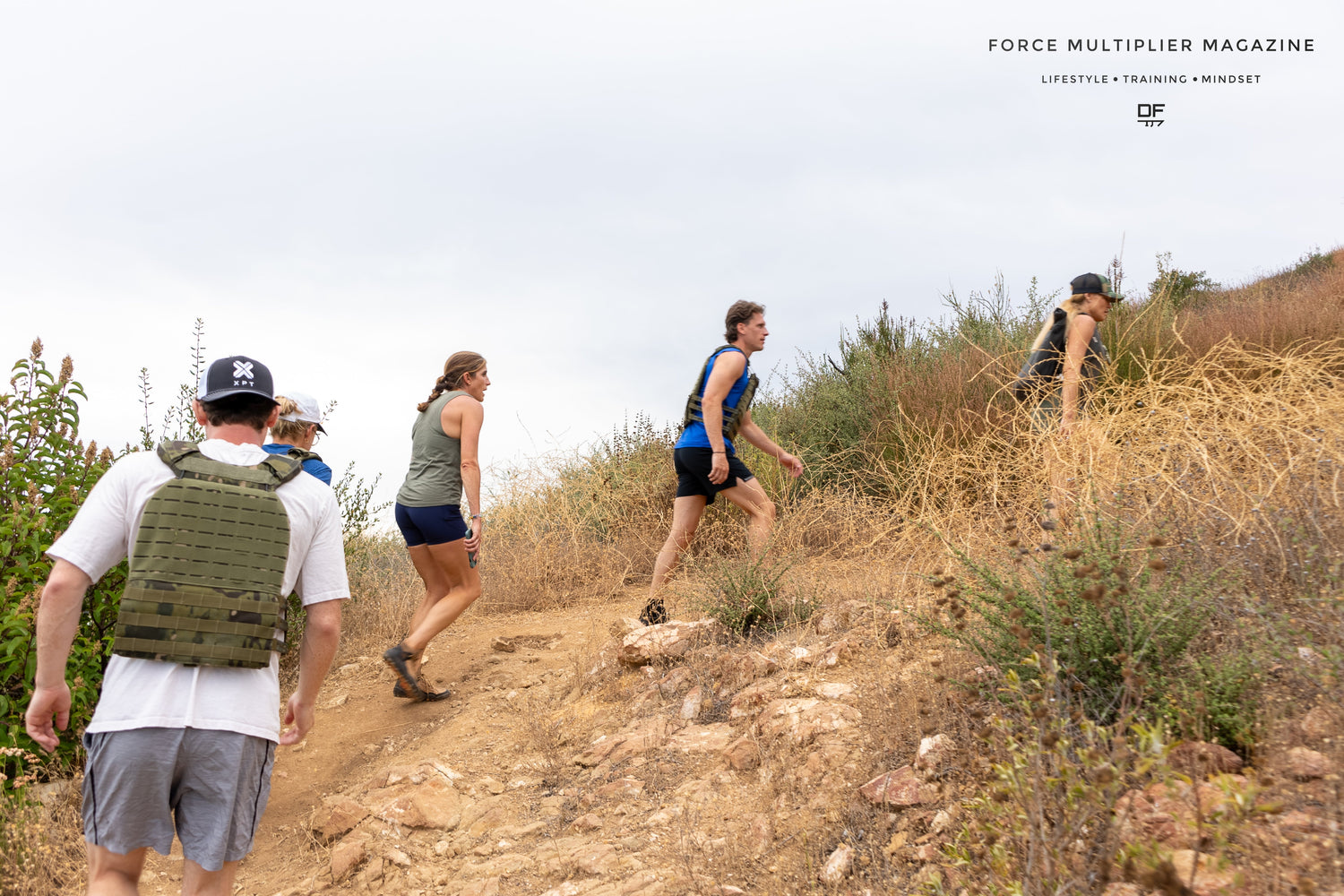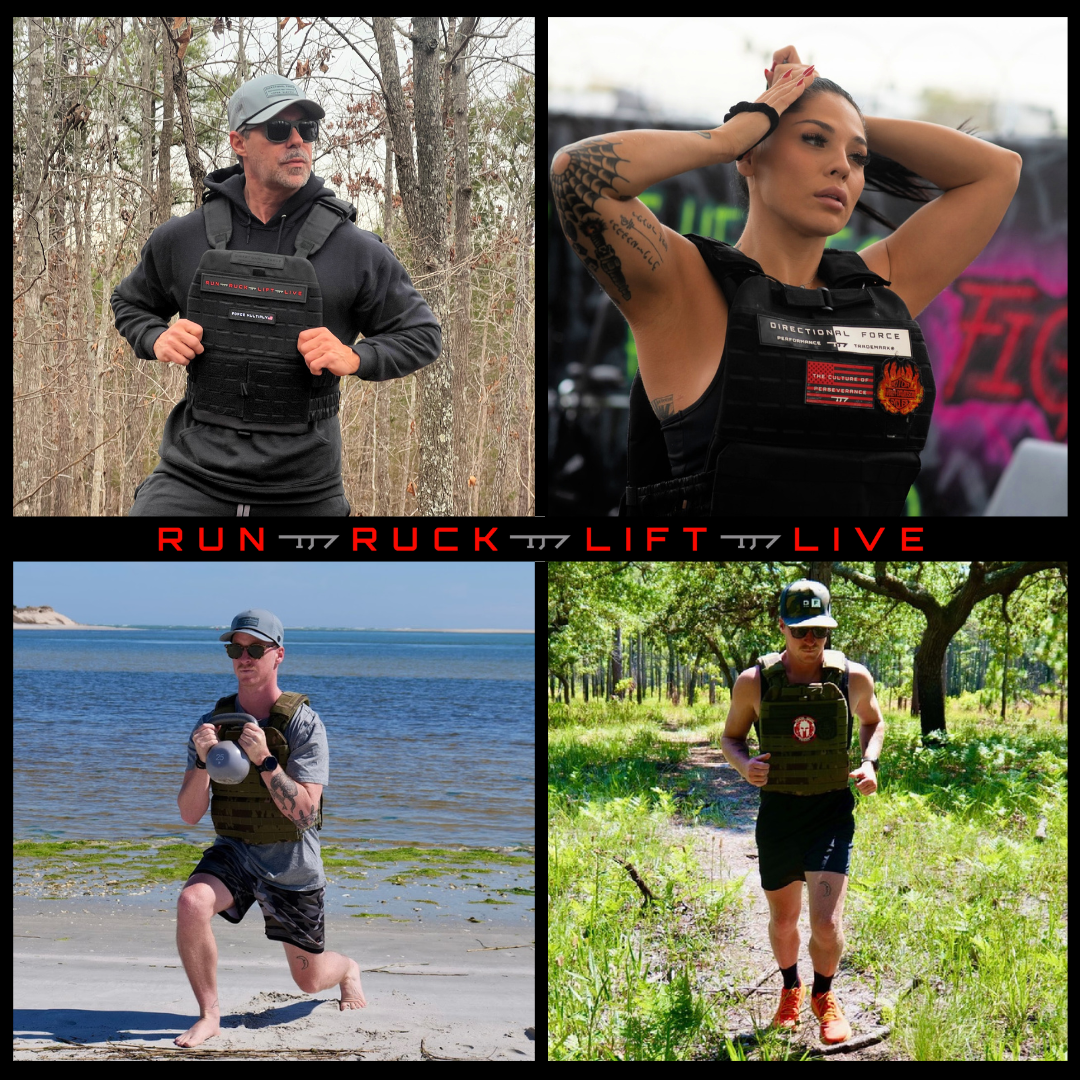Introduction: What is Rucking?
Rucking is a simple yet powerful exercise that involves walking or hiking with added weight, typically with a weight vest or in a ruck pack, a sturdy backpack designed for heavy loads. Originating from military training, where soldiers march with heavy gear, rucking has surged in popularity as a fitness trend for civilians. It’s a low-impact, full-body workout that builds strength, endurance, bone health, and mental resilience while burning calories. Whether you’re a fitness newbie or a seasoned athlete, rucking is an accessible way to get stronger, leaner, and stay in shape.
How to Ruck: Gear and Technique
Choosing Your Gear
-
Ruck Pack: A durable backpack with padded straps and a secure fit is ideal. Ruck packs designed to handle 20–50 pounds of weight. Ensure the pack sits high on your back to avoid strain.
-
Weight Vest: A weight vest distributes weight evenly across your torso, offering a sleeker alternative to a ruck pack. Look for adjustable vests (10–50 pounds) with a snug fit. It's a versatile tool that you can also use for bodyweight workouts, etc. Start with 10–20 pounds if you’re new to rucking, and gradually increase as you build strength.
-
Weights: For ruck packs, use weight plates, sandbags, or anything heavy wrapped in a towel to prevent shifting. Start with 10–20 pounds if you’re new to rucking, and gradually increase as you build strength. Weight Vests have an advantage by providing secured dedicated plate pockets. Make sure that ruck pack you select has a dedicated secured plate pocket.
Getting Started
-
Pack It Right: Load the weight close to your back in the ruck pack to maintain balance. Secure loose items to prevent movement. Thats where a pack, like the Directional Force Motivator Ruck Pack, designed to carry plates in a secured position is a real benefit.
-
Proper Fit: Adjust the straps so the pack or vest sits comfortably without bouncing.
-
Posture and Form: Stand tall, engage your core, and take shorter strides to avoid over-striding. Keep your shoulders relaxed to prevent tension.
-
Start Small: Begin with 20–30 minute walks, 2–3 times a week, on flat terrain. Gradually increase weight, distance, or incline as your fitness improves.
-
Terrain and Pace: Mix up your routes—try trails, hills, or urban paths. Aim for a brisk but sustainable pace (around 15–20 minutes per mile).
Why Ruck? Benefits for Strength and Fitness
Rucking is a game-changer for anyone looking to get leaner and stronger. Here’s why:
-
Full-Body Strength: Carrying weight engages your core, back, shoulders, and legs, building functional muscle. It mimics real-world tasks like carrying groceries or hiking with gear.
-
Calorie Burn: Rucking burns 2–3 times more calories than regular walking, depending on weight and intensity, making it a fantastic tool for fat loss. It will help you burn more calories, therefore helping you maintain a calorie deficit to lost weight.
-
Low Impact: Unlike running, rucking is gentle on joints, reducing injury risk while still providing a cardiovascular challenge.
-
Mental Toughness: The physical challenge of carrying a load over long distances builds discipline and resilience, perfect for those who thrive on pushing their limits.
-
Versatility: Ruck anywhere—parks, trails, or your neighborhood. No gym membership required.
Tips for Success
-
Hydrate and Fuel: Drink water before and during long rucks, and eat a balanced meal with protein and carbs afterward to aid recovery.
-
Listen to Your Body: Avoid adding too much weight too soon to prevent strain or injury. Soreness is normal, but sharp pain means you should stop and reassess.
-
Join a Community: Look for local rucking groups, or start a Directional Force Ruck Club in your area. It's a great way to stay motivated and connect with others.
-
Footwear Matters: Wear sturdy, codmfortable shoes with good grip, like trail runners or hiking boots, to support your feet under extra weight.
Rucking is more than just a workout—it’s a lifestyle that combines fitness, adventure, and mental grit. With just a ruck pack or weight vest, you can transform your daily walk into a strength-building, calorie-torching session that keeps you lean and fit. Start light, stay consistent, and embrace the challenge. Your body and mind will thank you.
Disclaimer: Always consult a healthcare provider before starting any workout program or physical activity to make sure that you're healthy enough.
The content contained in this article is for information purposes only, and is not meant to be a substitute or replacement for professional advice and medical consultation. It is just shared as information only, and with the understanding that Directional Force, LLC, (Directional Force) is not engaged in the provision or rendering of medical advice or services whatsoever. You unilaterally understand and agree that Directional Force shall not be liable for any claim, loss, or damage arising out of the use of, or reliance upon any content or information in this article or any article provided by Directional Force. Please seek professional medical advice prior to engaging in, or undertaking any of the content, exercises, advice, and workouts provided by Directional Force.


